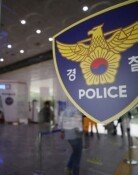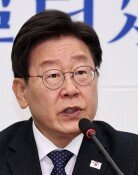Potential Growth Rate to Fall to 3 Pct. Level This Year
Potential Growth Rate to Fall to 3 Pct. Level This Year
Posted July. 15, 2009 08:22,
The countrys potential economic growth rate is feared to fall to the three-percent range, down from an early 4 percent level, due to sluggish corporate investment, several think tanks said yesterday.
The potential growth rate declined two percentage points from the six-percent range after the 1998 currency crisis, and further decreased last year due to the global financial meltdown. If Koreas economic fundamentals significantly weaken, the growth rate will not return to pre-crisis levels even after this crisis ends.
Forecasts released by private think tanks, the Bank of Korea, and the Strategy and Finance Ministry said the potential growth rate has fallen from 4.9 percent to around the three-percent range. The rate refers to growth that is achieved when all available means of production are injected.
The government began analyzing the causes of this phenomenon since a fall in the potential growth rate will worsen unemployment, thus hampering economic recovery.
○ Declining investment
A government-private sector research team, which was designed to suggest strategies under the previous Roh Moo-hyun administration, forecast in 2006 that the potential growth rate will rise half a percentage point from the previous projection of 4.4 percent between 2006 and next year. Until recently, the incumbent Lee Myung-bak government had also considered the figure as the unofficial forecast.
Not so, said Samsung Economic Research Institute. The private think tank said the potential growth rate fell to 3.9 percent last year and will further decline to 3.7 percent this year.
Hyundai Economic Research Institute said the potential economic growth rate this year declined to the three-percent range and will probably drop to the two-percent range next year.
The Bank of Korea and the Korea Development Institute did not release their own forecasts but agreed that the rate will fall.
The reasons for the fall in the potential growth rate include sluggish corporate investment, high unemployment, and declining productivity. Most of all, a significant fall in facility investment has dealt a serious blow to the potential growth rate.
Domestic facility investment has decreased for eight straight years since October last year. For example, facility investment declined 13.1 percent as of May year-on-year.
○ Fears over rising unemployment
The biggest problem caused by a falling potential growth rate is a surge in unemployment. If the potential growth rate weakens at a time when the short-term unemployment rate of temporary workers jumps due to the global economic crisis, unemployment will pose a structural and long-term problem.
Domestic unemployment went from three percent in October last year to 3.8 to four percent in February this year as the real economy began to drastically contract.
Byeon Yang-gyu, a research fellow at Korea Economic Research Institute, said, Unemployment has increased due to cyclical factors, and this refers to the economic crisis. If investment stays sluggish, this will reduce the potential growth rate. In that case, unemployment will worsen further even after the country recovers from the economic crisis.
Economists urged more deregulation to boost corporate investment and raise the birth rate through measures to ease the burden on couples.
Yoo Byeong-gyu, director of the economic research division at Hyundai Economic Research Center, said, If the government wants to boost the potential growth rate, it should encourage companies to invest more and improve welfare policies. It will take more time and effort to recover the potential growth rate than to overcome the current crisis.
legman@donga.com jaeyuna@donga.com







